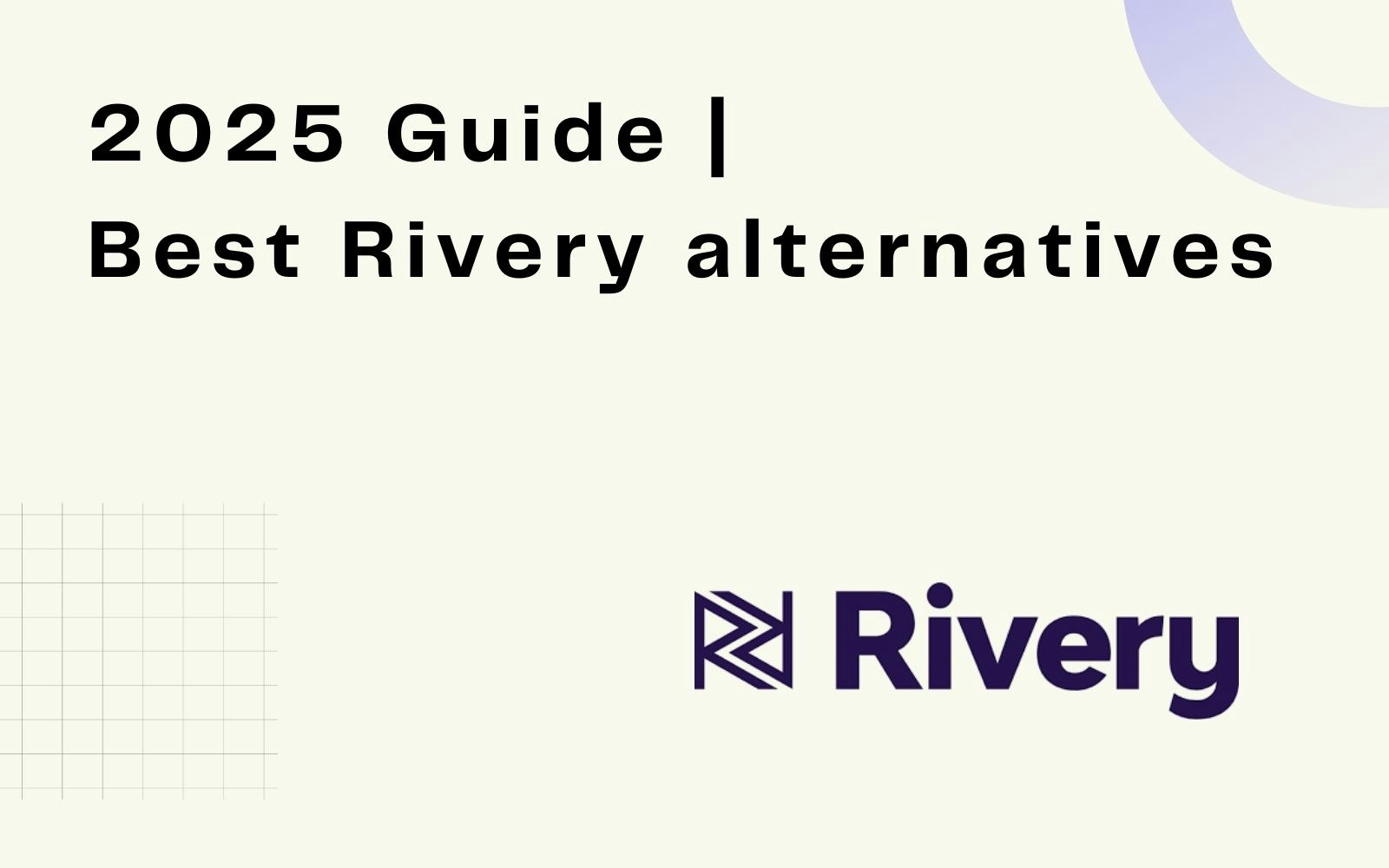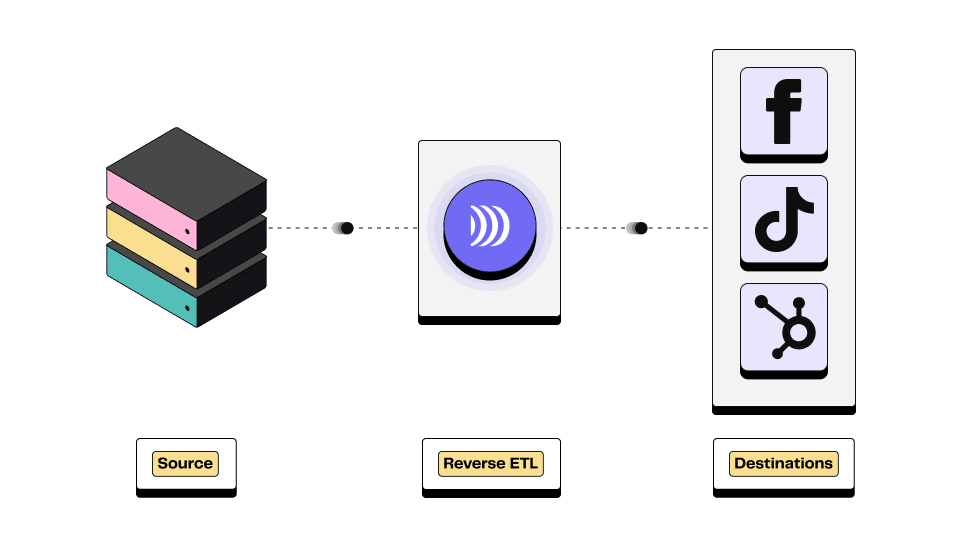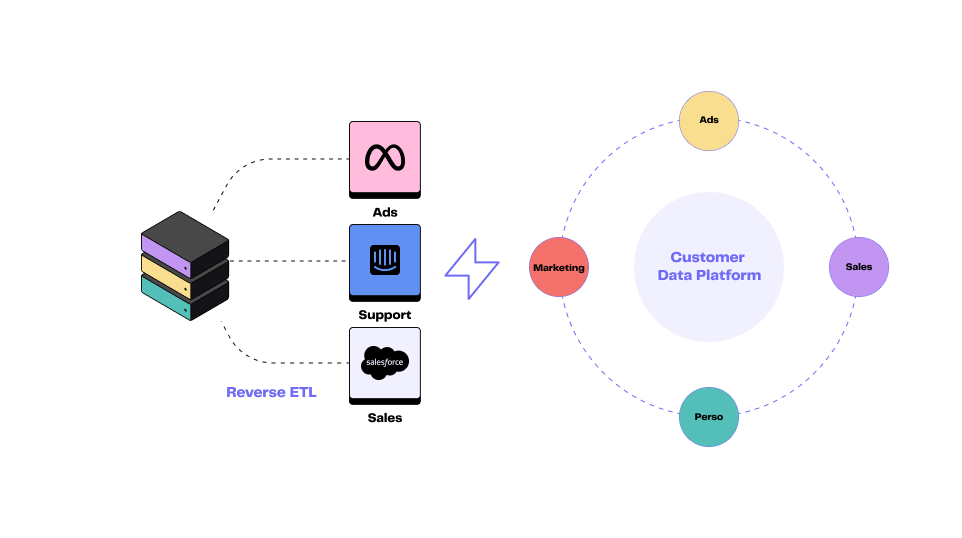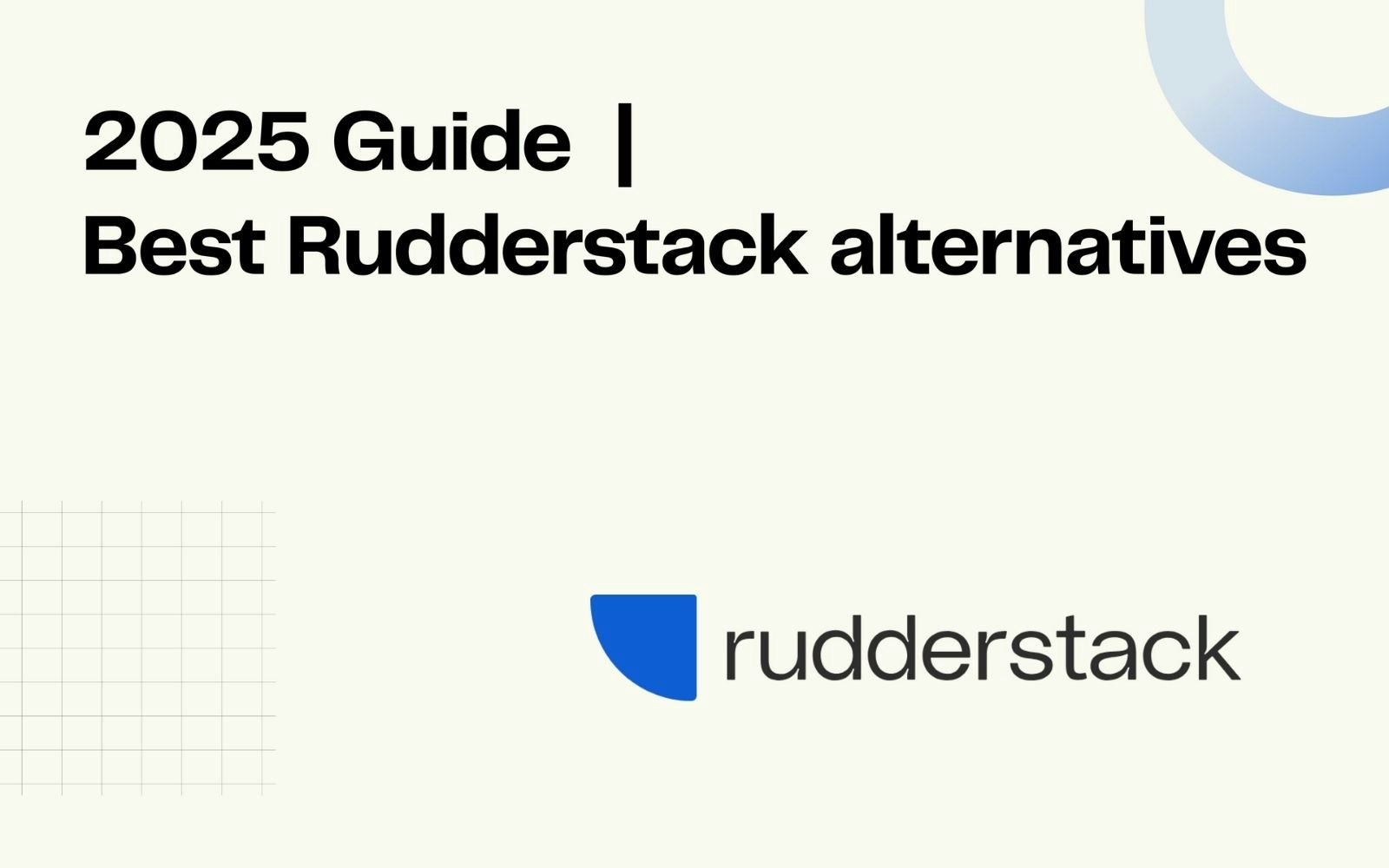
The best alternatives to RudderStack
6min • Last updated on Nov 13, 2025

Olivier Renard
Content & SEO Manager
According to Statista, over 60% of the world's corporate data is now stored in the cloud, compared with 30% in 2015. This is a major challenge for data teams, who are looking for high-performance tools to manage and exploit this strategic information.
RudderStack is an open-source platform designed to collect, transform and centralise data through a range of products. Designed for developers, it offers Reverse ETL functionality. By combining its various modules, it is now seeking to position itself as a Customer Data Platform (CDP).
Find out how RudderStack meets the challenges of data management. Explore the best alternatives to find the tool that suits your needs.
Key facts:
RudderStack is an open-source Customer Data Infrastructure (CDI) designed for developers.
It offers various products covering ETL, Reverse ETL and even CDP functionalities. It requires technical skills to be fully exploited.
Alternatives such as DinMo and Hightouch offer flexible approaches that are better suited to the needs of business and data teams.
Ease of integration, flexibility, governance and cost: identify the different criteria to make your choice.
🔎 Discover RudderStack's key features and explore its best alternatives. Find practical advice on choosing the tool best suited to your needs. 💡
What is RudderStack?
RudderStack is a Customer Data Infrastructure founded in 2019 designed to meet the needs of data teams. It enables businesses to collect, unify, and activate customer data from multiple sources.
RudderStack was initially created to build data pipelines to business applications or the data warehouse (ETL). It now offers a total of more than 200 connectors.
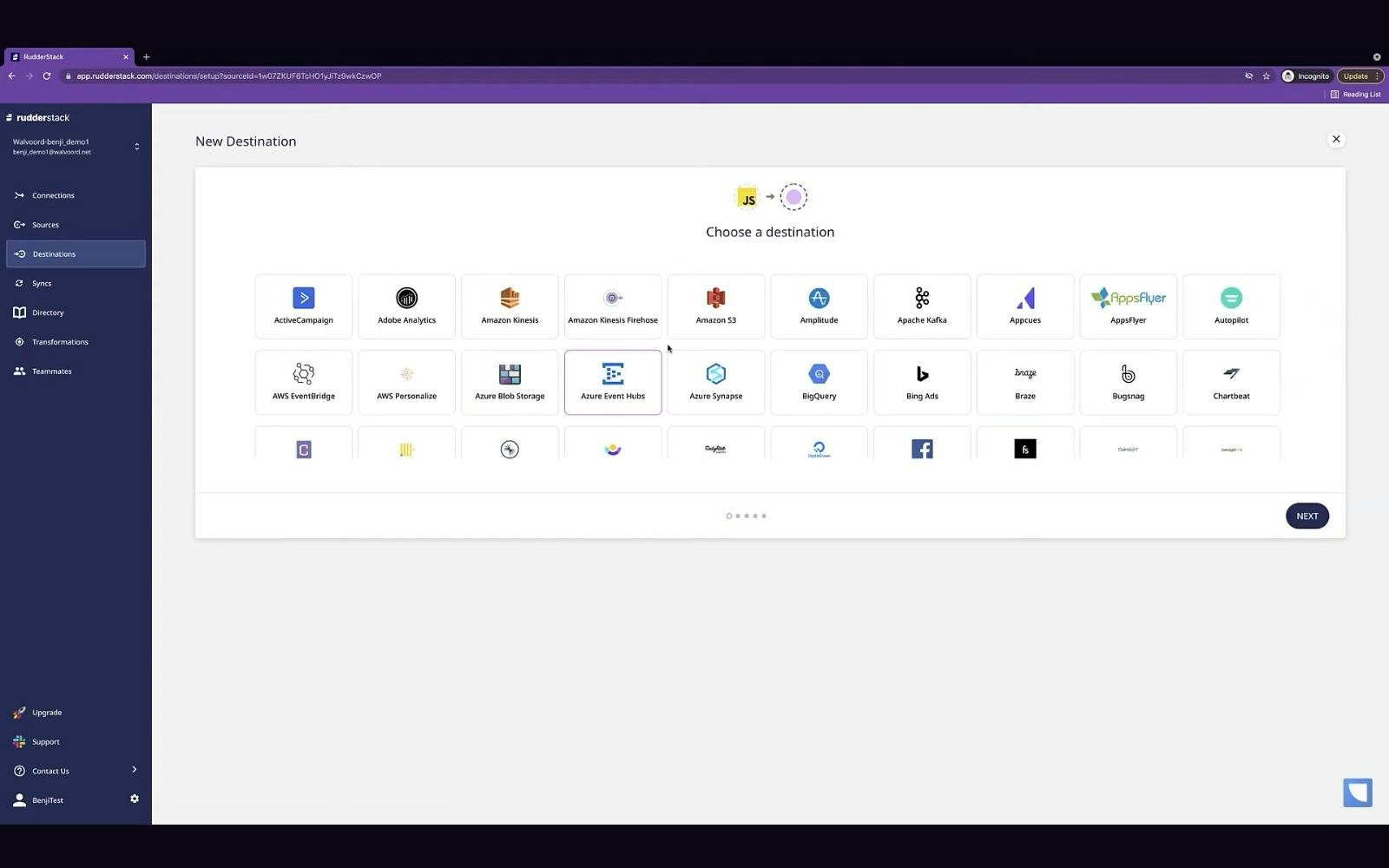
RudderStack source-destination connections
Built around multiple modules (integration, governance, identity resolution, reverse ETL), RudderStack positions itself as a CDP for developers. The tool is therefore particularly popular with companies with dedicated technical teams.
This architecture offers advanced customisation possibilities, but remains more complex for marketing teams.
How does RudderStack work?
RudderStack is a browser-based SaaS solution. Like a composable CDP, it is based on a company's existing data warehouse.
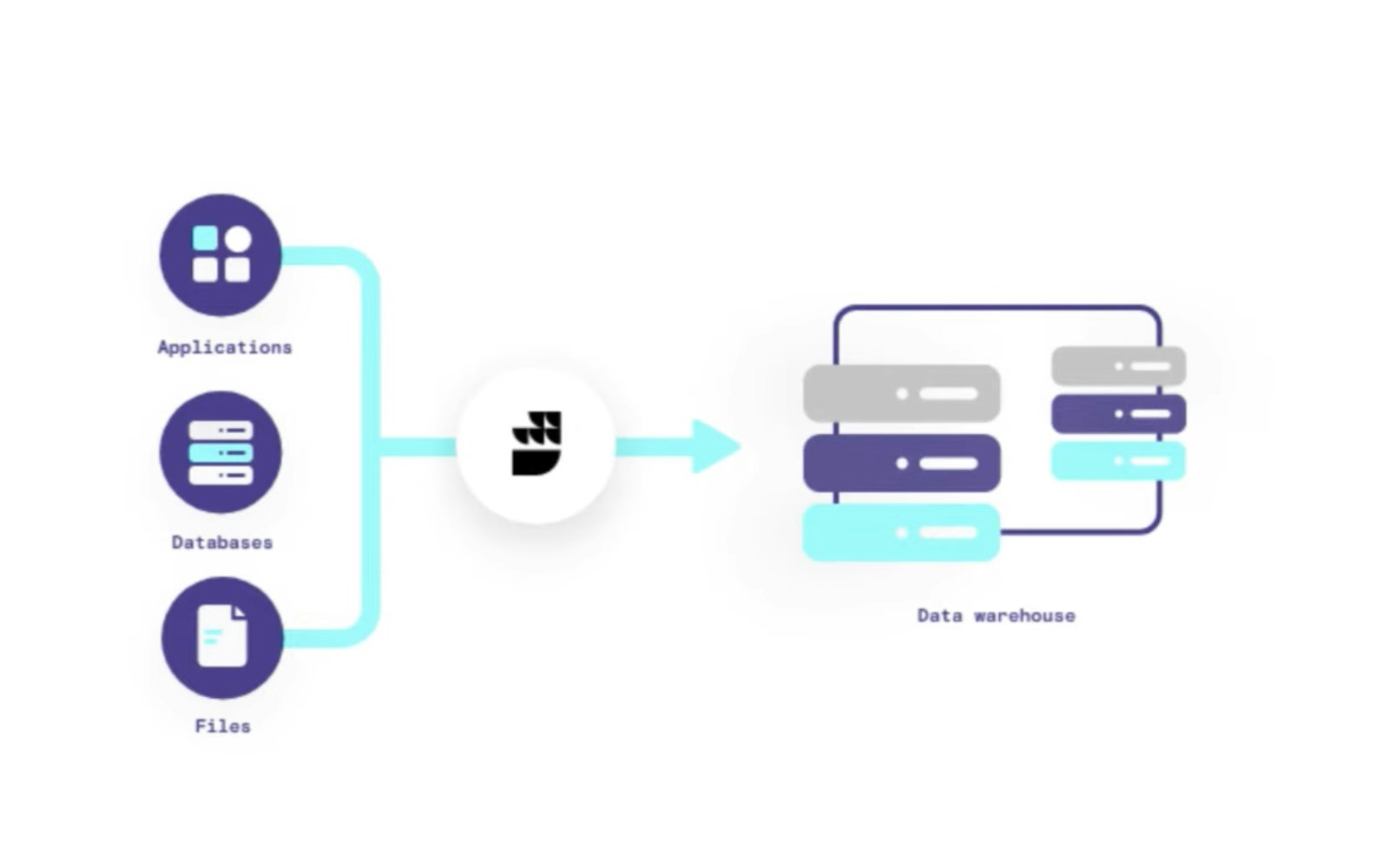
ETL (Extract, Transform, Load) process - Source: RudderStack
The solution is based on three main functionalities, each associated with a dedicated product:
Collect = RudderStack Event Stream. This module collects customer data in real time. This consists of events from different sources: websites, mobile applications and servers.
It then routes this information to the data warehouse or analytical tools, and integrates it seamlessly and centrally. This approach offers greater control over first-party data. This data can then be used to carry out precise analyses or effective marketing actions.
Unify = RudderStack Profiles. This brick manages identity resolution and profile enrichment. It creates unified customer profiles by consolidating the interactions and attributes of each user from various data sources.
This is an essential step in providing a 360° view and a better understanding of the customer journey.
Activate with the Reverse ETL solution. It enables unified data to be synchronised with marketing, CRM or analytical tools (HubSpot, Google Analytics, Snowflake, etc.).
The Reverse ETL function automates this process. It reinforces consistency between the different systems used by the company, which differentiates it from iPaaS. The aim is to make the data usable by all the business teams.
👉🏼 To understand the benefits of Reverse ETL, take a look at our one-pager!
👇
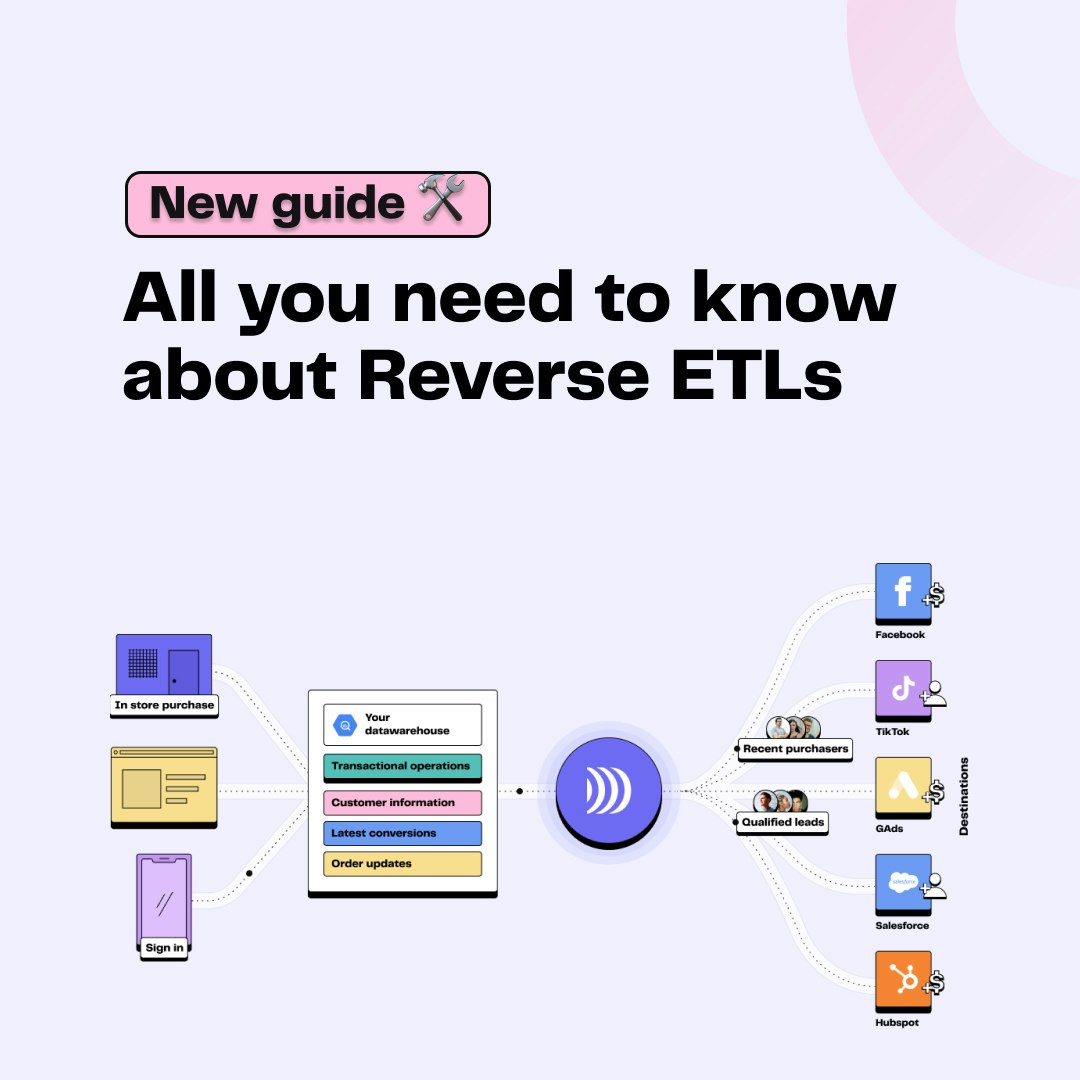
All you need to know about Reverse ETL
The complete guide to Reverse ETL
The limitations of RudderStack
Why consider an alternative?
RudderStack is a recognised Customer Data Infrastructure that builds on the existing ecosystem. It also has a number of limitations that may lead companies to explore alternatives.
Its open-source design and building-block approach make it a flexible tool, but also a technically demanding one. Its deployment and management require advanced engineering skills, which can make it difficult for marketing or non-technical teams to adopt.
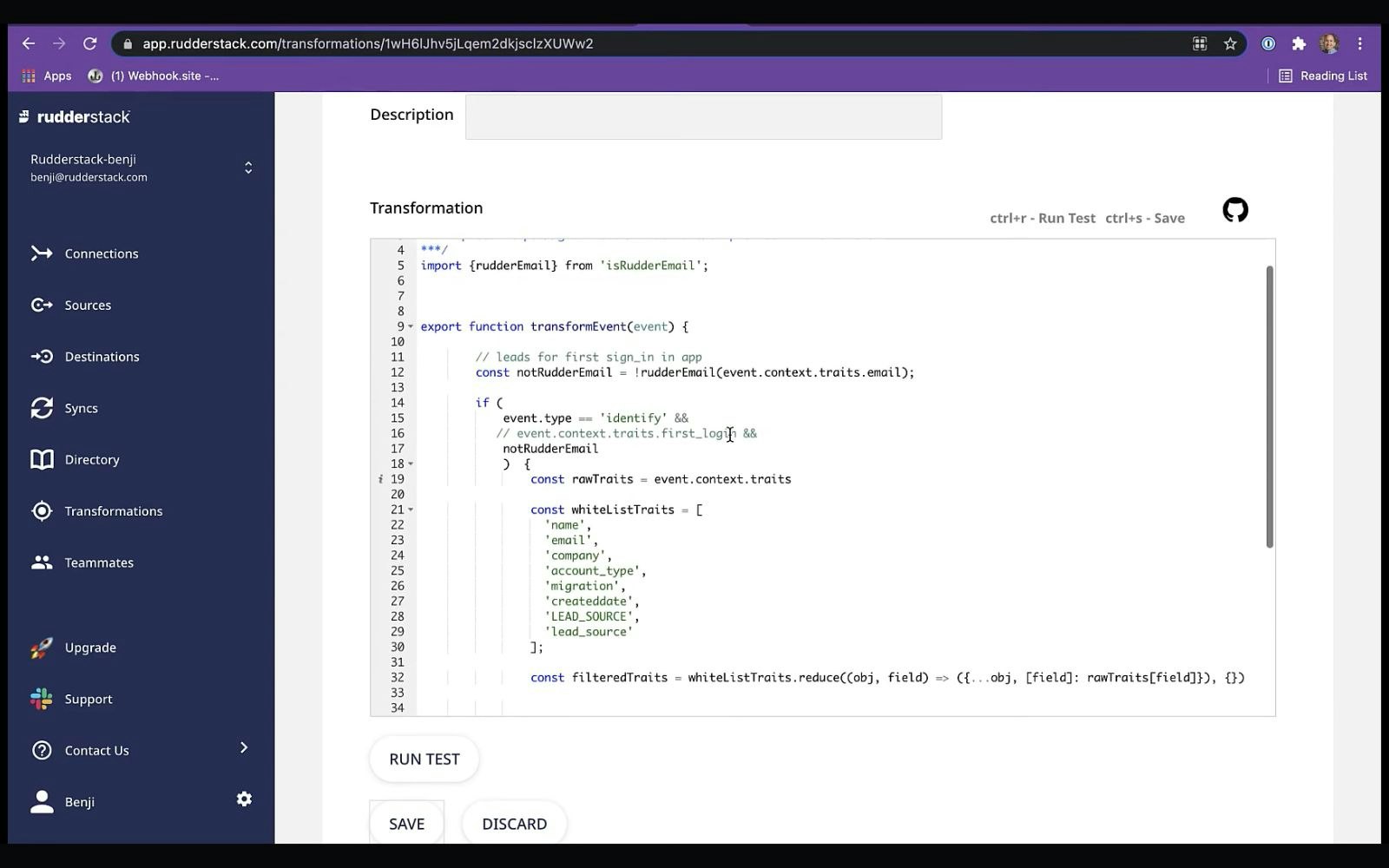
RudderStack CDP for developers
From a marketing point of view, the combination of its various functions covers all the use cases of a Customer Data Platform. Originally designed for data teams, it is nevertheless presented by the publisher as a CDP for developers.
For businesses with less mature data practices, this dependency can slow down implementation and lead to additional costs.
The publisher is quite transparent about its pricing policy. It should be noted that many advanced features (Audience Builder, Identity Resolution, etc.) are only available in the premium plans.
To meet these needs, certain alternatives such as DinMo, Hightouch and Census stand out by offering more accessible solutions. They maintain high standards of governance and security, while offering simplified integration and no-code interfaces.
Depending on your needs and resources, let's take a look at the key criteria that will determine your choice.
Criteria for selecting your Reverse ETL solution
Criteria | Description | Objective |
|---|---|---|
Ease of integration | Compatibility with your data warehouses and business tools. | Simplify implementation and reduce complexity. |
Accessibility | No-code/low-code interface enabling operational staff to activate data easily. | Accelerate the autonomy of marketing teams. |
Governance and compliance | Compliance with standards (GDPR, CCPA, SOC 2) and control of data in the warehouse. | Guarantee data security and compliance. |
Flexibility and personalisation | Advanced management of segments, transformations and activation scenarios. | Enable varied and complex use cases. |
Support and documentation | Reactive support and detailed resources. | Make it easy to get started and resolve technical problems quickly. |
Functionality/price ratio | Balance between functionality/upgradeability and cost of the solution. | Optimise investment, avoid hidden costs. |
The main criteria for selecting a Reverse ETL
These criteria will enable you to choose the most appropriate solution for your organisation.
The main alternatives
1️⃣ DinMo
DinMo's Reverse ETL solution is designed for business teams. It enables you to activate data from your data warehouse to your operational tools without any technical skills.
Thanks to its intuitive, code-free interface, DinMo makes it easy to create audience segments and synchronise data in real time. This approach enables marketing teams to personalise campaigns and improve the customer experience without relying on technical teams.
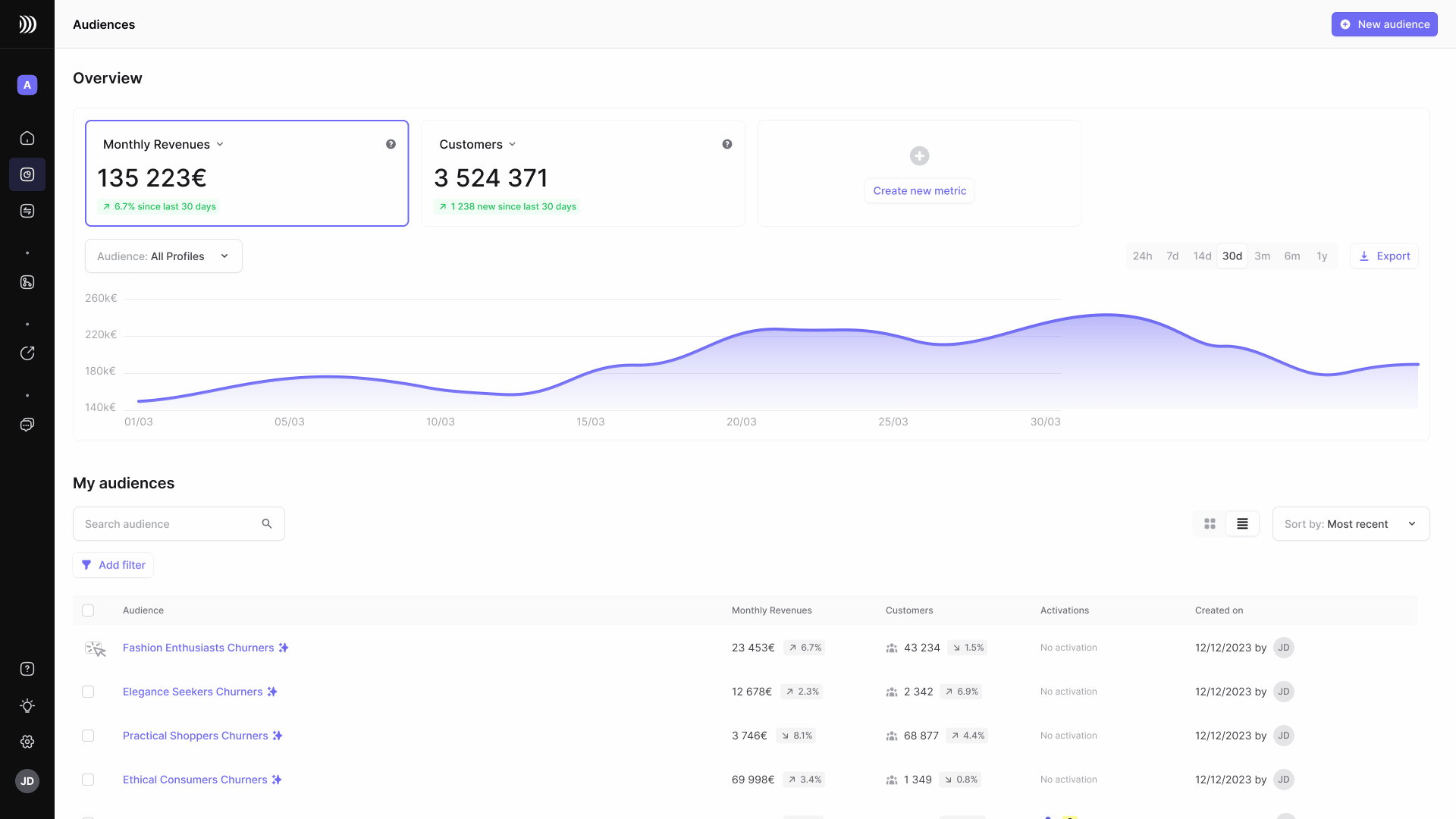
One-click activation
DinMo also offers machine learning capabilities to enrich customer profiles with predictive attributes such as customer lifetime value (LTV) or churn risk. In this sense, it is a modular Customer Data Platform that goes well beyond Reverse ETL.
DinMo's key strengths:
Speed of deployment: simplified implementation, with use cases that can be exploited within a day.
No-code interface: marketing teams create audiences and activate data without any technical intervention.
Native integration: compatible with Snowflake, BigQuery and Redshift, with no duplication of data.
Compliance and security: regulatory compliance and total control over your data.
Personalisation and AI: AI features to anticipate customer behaviour and optimise campaigns.
Cost: use only the building blocks you need in a ‘best of breed’ approach.
2️⃣ Hightouch
Originally, Hightouch was a general-purpose reverse ETL designed for data teams. The tool has gradually been expanded to include marketing teams.
It now offers all the functionality of a CDP, without the need for a separate tool. In particular, Hightouch enables data to be transferred from the data warehouse to the CRM, marketing platforms or support tools.
Hightouch adapts to the company's infrastructure and enables the customer experience to be personalised. Its Campaign Intelligence suite offers analysis tools for measuring the performance of marketing campaigns.
3️⃣ Census
Census's Reverse ETL enables data from the data warehouse to be synchronised with business applications. Census's solution covers all the use cases of a CDP, in a composable approach.
Its main features are :
Identity resolution: unification of customer data to create complete profiles.
Campaign orchestration: automation of data flows to operational tools.
Audience construction: creation of precise segments for targeted actions.
However, Census has a technical interface that may limit its accessibility for marketing teams. What's more, certain functions that do not require coding are only available in "Enterprise" plans, which can lead to additional costs.
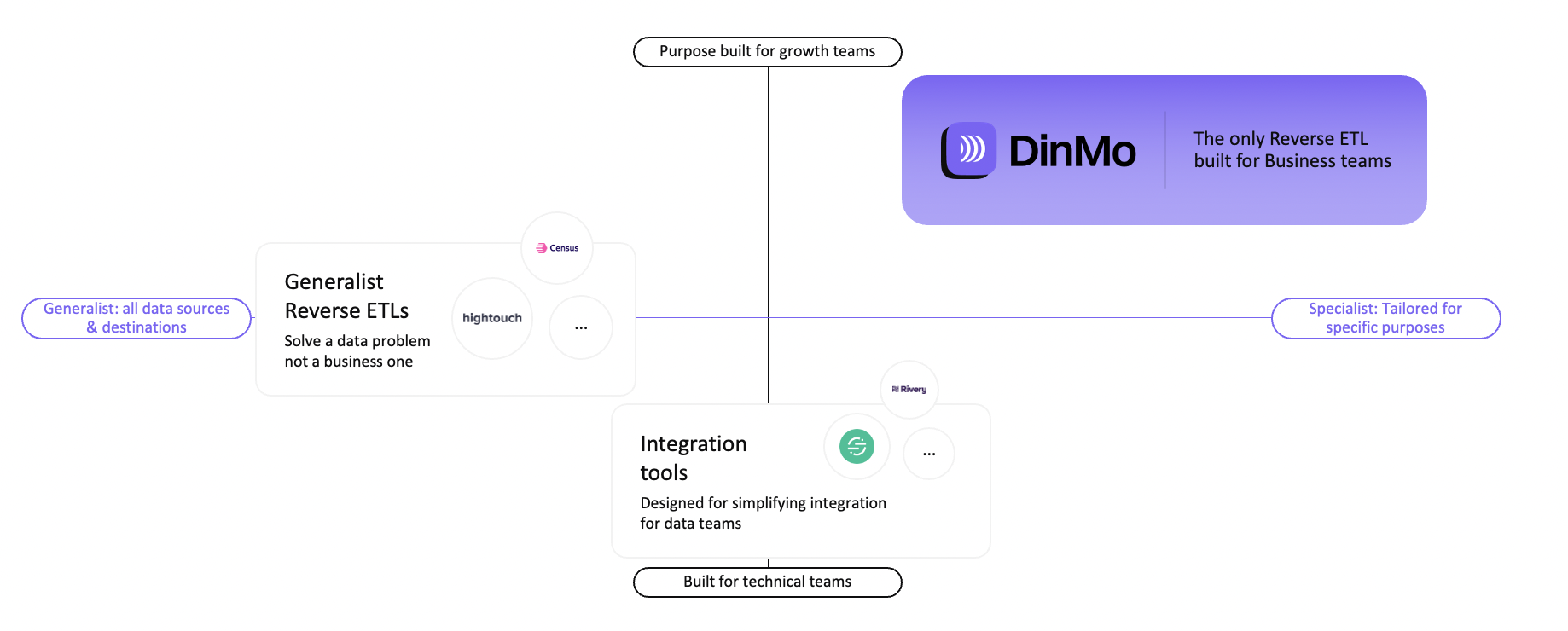
Reverse ETL categories
4️⃣ Twilio Segment
By extension, RudderStack presents its platform as a CDP for developers. There are many CDPs on the market.
Segment is a traditional CDP created in 2011 and acquired by Twilio in 2020. It collects, unifies and sends customer data to various analytical and marketing tools, thanks to the following modules:
Connections: Collects and centralises customer data from multiple sources (websites, apps, servers).
Protocols: Standardisation and validation of the information collected to guarantee its quality.
Unify: Creation of unified customer profiles thanks to identity resolution.
Twilio Engage: Activation of customer data for personalised, automated marketing campaigns.
Unlike the Reverse ETL solutions described above, Segment imposes predefined models and stores the data in its own infrastructure. This duplication can also lead to additional costs and governance complexities.
Conclusion
RudderStack is a high-performance open-source Customer Data Infrastructure used to collect, integrate and manage customer data. Its technical complexity and data-first focus may limit its accessibility.
Alternatives such as DinMo, Hightouch and Segment offer a variety of approaches tailored to different needs. DinMo stands out for its native integration with data warehouses and its no-code interface, ideal for marketing teams.
To choose the best solution, assess your needs in terms of flexibility, compliance and ease of implementation. Ready to harness the power of your data? Contact DinMo today! 🚀
*Source: Statista


















